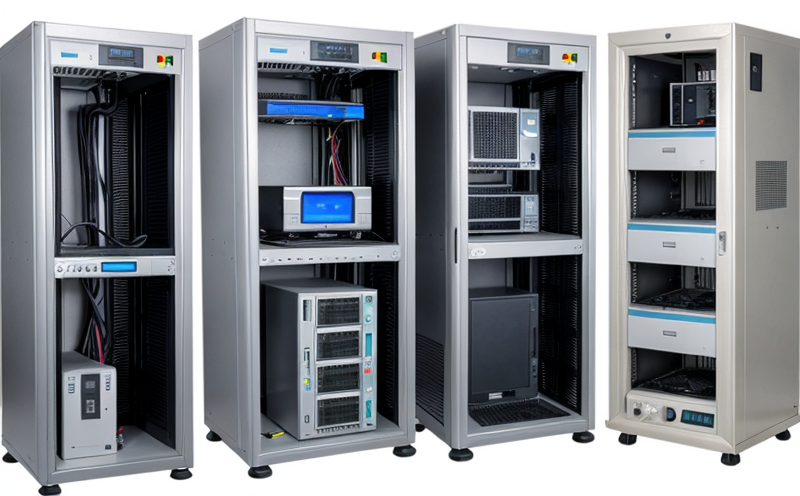ANSI C63 4 EMC Compliance Testing for IT Equipment
The ANSI C63.4 standard is a crucial requirement for manufacturers of Information Technology (IT) equipment to ensure electromagnetic compatibility (EMC). This compliance test is mandatory before products can be sold or used in the United States and its territories, where the standard mandates that all such devices must meet certain EMC requirements.
The scope of ANSI C63.4 covers a wide range of IT equipment including computers, servers, networking devices, storage systems, and other similar devices. The primary objective is to ensure these products do not emit electromagnetic interference (EMI) or susceptibility to EMI that would disrupt the proper operation of other electronic equipment.
The testing process involves several stages: initial design review, prototype evaluation, production line inspection, and final product certification. Each stage ensures that the device meets the stringent requirements set by ANSI C63.4.
During initial design reviews, engineers must ensure compliance with all relevant standards including FCC Part 15 for unlicensed devices and EN 55022 for specific types of equipment. Prototype evaluation is conducted to identify any potential issues early in the development cycle. Production line inspections are performed regularly to maintain consistent quality throughout manufacturing processes.
The final step, certification, involves rigorous testing at an accredited laboratory using controlled environments that simulate real-world conditions where electromagnetic interference could occur. This includes EMI emissions tests and susceptibility tests both conducted within strict limits defined by ANSI C63.4. Only when all these criteria are met can the manufacturer obtain certification confirming compliance with this important standard.
For R&D engineers, understanding how to prepare specimens properly is essential; it involves ensuring that each unit being tested represents a typical example of the intended product line. This preparation includes selecting appropriate test samples, preparing them according to specified procedures, and documenting all steps taken during specimen preparation.
Instrumentation used in ANSI C63.4 testing typically comprises specialized equipment capable of measuring both radiated and conducted emissions over specific frequency ranges relevant to IT applications. Reporting must be detailed enough to demonstrate full compliance with all applicable sections of the standard. Compliance officers need accurate records not only for internal quality assurance purposes but also to facilitate audits by regulatory bodies.
Failure to comply with ANSI C63.4 can result in significant penalties including fines, recalls, and damage to brand reputation. Therefore, ensuring adherence is critical for any manufacturer operating within the U.S. market or exporting products there.
To sum up, ANSI C63.4 EMC compliance testing plays a vital role in maintaining high standards of product quality while promoting reliable communication networks and reducing interference issues between various electronic devices. By adhering to this standard, manufacturers can gain competitive advantages by building trust among consumers who value reliability and performance above all else.
Why Choose This Test
The ANSI C63.4 test is essential for several reasons:
- Regulatory Compliance: Meeting this standard ensures that your IT equipment meets federal regulations, which helps avoid legal issues and potential penalties.
- Better Product Quality: The rigorous testing process helps identify any flaws early on in the design phase, leading to higher quality products overall.
- Increased Consumer Trust: By demonstrating compliance with recognized standards like ANSI C63.4, you enhance consumer confidence in your brand and its offerings.
- Competitive Edge: In today’s competitive marketplace, having a certified product can set you apart from competitors who may not meet the same rigorous standards.
- Easier Market Access: Many countries outside of just the U.S. recognize ANSI C63.4 as an acceptable standard for EMC testing, making it easier to export your products internationally.
- Enhanced Reliability: Regularly conducting such tests helps ensure that your IT equipment continues performing optimally over time without causing interference with other devices or systems.
In summary, choosing ANSI C63.4 compliance testing demonstrates a commitment to excellence in product design and manufacturing practices, ultimately benefiting both the manufacturer and end-users of their products.
Quality and Reliability Assurance
- Initial Design Reviews: These are conducted early in the development process to catch potential issues before they become costly problems. They help ensure that all aspects of the product design meet not only ANSI C63.4 but also other relevant standards.
- Prototype Evaluations: By testing prototypes, manufacturers can identify any weaknesses or areas needing improvement early on in production. This allows for adjustments to be made promptly rather than after the product has been mass-produced.
- Production Line Inspections: Regular checks during manufacturing ensure consistent quality across all units produced. This helps maintain high standards throughout the entire production cycle.
- Final Product Certification: Once everything passes through previous stages successfully, final certification confirms that the product is fully compliant with ANSI C63.4 and ready for sale or use.
The emphasis on quality assurance throughout every stage of development underscores the importance placed on creating reliable products that meet strict standards like those outlined in ANSI C63.4. This commitment translates into better-performing devices capable of operating effectively even under challenging electromagnetic conditions.
Customer Impact and Satisfaction
- Better Performance: Compliant products perform reliably across various environments, ensuring consistent user experience regardless of external factors such as background noise or nearby equipment.
- No Interference Issues: By avoiding unwanted interference with other devices, users can enjoy uninterrupted use without worrying about disruptions from neighboring electronics.
- Increased Confidence: Knowing that their products meet recognized standards instills confidence in customers, fostering loyalty and positive word-of-mouth recommendations.
- Improved Brand Image: Demonstrating compliance with respected industry standards enhances the overall reputation of your brand among consumers seeking high-quality solutions.
In conclusion, ANSI C63.4 compliance contributes significantly to enhancing customer satisfaction by delivering dependable IT equipment that operates seamlessly within diverse settings without causing interference or suffering from it themselves.





